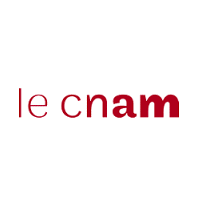Mathématiques
-
Ajoutée le 3 sept. 2013
-
Lagrange (Documentaire - 33 minutes)
Ajoutée le 6 déc. 2013 -
The surprising beauty of mathematics | Jonathan Matte | TEDxGreensFarmsAcademy
Ajoutée le 9 août 2013 -
Five Principles of Extraordinary Math Teaching | Dan Finkel | TEDxRainier
Ajoutée le 17 févr. 2016 -
Stop Teaching Calculating, Start Learning Maths! - Conrad Wolfram
Ajoutée le 25 oct. 2013 -
The Map of Mathematics
Ajoutée le 1 févr. 2017 -
[DOC] Le grand mystère des mathématiques - ARTE HD 2016
Omniprésentes dans les sciences et les technologies, les mathématiques sont-elles une invention ou une découverte, une science propre à l’humanité ou le langage même de l'univers ? Une enquête vertigineuse et originale au coeur d'un débat fascinant qui dure depuis l'Antiquité. Omniprésentes dans les sciences et les technologies, les mathématiques sont parvenues à décrypter les orbites elliptiques des planètes, à prédire la découverte du boson de Higgs ou à faire atterrir le robot Curiosity sur Mars. De tout temps, l’homme, en quête de cycles et de motifs, les a utilisées pour explorer le monde physique et pour comprendre les règles de la nature, du nombre de pétales de fleurs (répondant à des "suites") à la symétrie de notre corps. La réalité possède-t-elle une nature mathématique inhérente ou les mathématiques sont-elles des outils précieux créés par l’esprit humain ? Voyage visuel Depuis l’Antiquité grecque, leur universalité et leur efficacité ont nourri débats philosophiques et métaphysiques. Sur les traces de Pythagore (qui avait notamment établi des liens entre mathématiques et musique), Platon, Galilée, Newton ou Einstein, le film, ludique, sonde leur fascinant mystère et leur évolution au fil des siècles, en compagnie de Mario Livio, astrophysicien américain renommé, et de nombreux mathématiciens, physiciens et ingénieurs. Une enquête captivante, formidablement illustrée d’exemples, en même temps qu’un voyage visuel vertigineux. Entre construction neuronale et ordre cosmique, à la frontière de l’invention et de la découverte, les mathématiques, extraordinaire énigme, n’ont pas fini de révéler, d’anticiper et de surprendre.
-
Le PARADOXE du PENALTY
Dans la série des paradoxes, voici celui du penalty : le ballon tiré par Zidane entre-t-il ou n'entre-t-il pas dans le but ? L'histoire nous dit "oui", les mathématiques nous disent "non" ! ??? Ce paradoxe est inspiré du paradoxe d'Achille exposé il y a 2500 ans par le philisophe Zénon.
-
La puissance organisatrice du hasard - Micmaths - @mickaellaunay
Ajoutée le 27 avr. 2017Voici quelques liens pour aller plus loin sur les différents sujets abordés dans cette vidéo.
Sur les chemins aléatoires :
- Programme en ligne pour tester les chemins aléatoires : http://micmaths.com/applis/lgn/marche...
- Pour en savoir plus sur ce sujet, vous pouvez faire des recherches sur les "marches aléatoires", sur la "loi des grands nombres" ou encore sur le "mouvement brownien".
Sur les recouvrements de dominos :
- Programme pour tirer des recouvrements au hasard : http://micmaths.com/applis/lgn/diaman...
- Un article plus détaillé sur le site Image des maths : http://images.math.cnrs.fr/pavages-al...
La branche de la physique dont il est question dans la dernière partie de la vidéo se nomme physique statistique.
____
Vous pouvez également suivre mes actualités mathématiques :
- sur twitter : https://twitter.com/mickaellaunay
- sur facebook : https://www.facebook.com/micmaths -
#MOOC En cours 20 mar 2017 : Socle en Mathématiques Le Cnam @LeCnam
En savoir plus : https://www.fun-mooc.fr/courses/itii/119002/session01/about
À propos du cours
Les mathématiques sont partout, elles constituent le fondement de beaucoup de connaissances scientifiques et techniques, et donnent un langage commun à tous les ingénieurs. Ce MOOC vise à revoir les notions de base nécessaires pour commencer des études d'ingénierie.
Format
Ce MOOC se déroule sur 12 semaines. Chaque semaine comporte cinq ou six séquences. Chaque séquence est composée d’une ou deux vidéo vous présentant une thématique ainsi que des exercices qui permettront aux apprenants de faire le point sur leurs acquis.
Pour chaque semaine, des discussions sont ouvertes sur le forum. Un retour sur les principales questions abordées se fera par Hangout tous les quinze jours.
Prérequis
Aucun
Public visé
Toutes les personnes qui souhaitent revoir des notions élémentaires en mathématiques pour le plaisir ou pour reprendre des études scientifiques ou techniques.
Public particulièrement visé :
- Jeunes envisageant une poursuite d’études scientifiques, notamment après un bac+2 scientifique/technique (BTS ou DUT)
- Techniciens en poste désirant booster leur carrière en devenant ingénieur
L'enseignante

ISABELLE GIL
Maître de Conférences hors classe en mathématiques au Conservatoire National des Arts et Métiers (Paris) membre de l’EPN6 Mathématiques, Statistique, responsable de la filière Exploitation Ferroviaire en FIP, coordinatrice des enseignements de mathématiques pour toutes les filières d'ingénieur de l'antenne alternance du Cnam à Paris.
Isabelle GIL enseigne depuis 2000 dans les Formations d'Ingénieurs en Partenariats (FIP). Elle a créé et mis en place de nouveaux exercices dirigés en premier cycle et des TP de mathématiques utilisant Matlab et Mapel pour plusieurs Formations d'Ingénieurs en Partenariat.
Elle est également membre active du développement de la Formation Ouverte à Distance (FOAD) pour l’EPN6 Mathématiques, Statistique et pour l'antenne alternance du Cnam depuis 2005.
Plan du cours
- Semaine 1 : Nombres Réels
- Semaine 2 : Eléments de trigonométrie
- Semaine 3 : Nombres complexes
- Semaine 4 : Eléments de calcul vectoriel
- Semaine 5 : Eléments de calcul matriciel
- Semaine 6 : Fonctions d'une variable réelle, premières propriétés
- Semaine 7 : Dérivées
- Semaine 8 : Représentation graphique d'une fonction
- Semaine 9 : Notion d'intégrale
- Semaine 10 : Calcul intégral
- Semaine 11 : Equations différentielles du premier ordre
- Semaine 12 : Equations différentielles d'ordre strictement supérieur à 1
Évaluation
Des épreuves hebdomadaires et une épreuve terminale de type QCM, permettent l’obtention de l’attestation de suivi avec succès.
Partenaires

Le Cnam
Co-producteur et réalisateur.

Les ITII
Co-producteur. Ce MOOC fait partie d'une série de MOOC ITII.
Conditions d'utilisation
Conditions d’utilisation du contenu du cours
Attribution - Pas d’Utilisation Commerciale - Pas de Modification
Cette licence est la plus restrictive des six licences principales, n’autorisant les autres qu’à télécharger vos œuvres et à les partager tant qu’on vous crédite en citant votre nom, mais on ne peut les modifier de quelque façon que ce soit ni les utiliser à des fins commerciales.
Conditions d’utilisation des contenus produits par les participants
Droits réservés
Licence restrictive : la production relève de la propriété intellectuelle de son auteur et ne peut donc pas être réutilisée.
-
#MOOC Who (else) cares about topology? Stolen necklaces and Borsuk-Ulam
Ajoutée le 10 févr. 2017The Great Courses Plus free trial: http://ow.ly/GtbB3083BZc
This is a beautiful proof, on how the Borsuk-Ulam theorem from topology can be used in a surprising way to solve a counting puzzle from discrete math. (Apologies for the typos at 3:20 and 17:18. Turns out I was too engrossed with the math to think about spelling!)
Shirts/posters at DFTBA: https://store.dftba.com/collections/3...
Mathologer's related video: https://youtu.be/7s-YM-kcKME
(Seriously, Mathologer is great)
VSauce on fixed points: https://youtu.be/csInNn6pfT4
The original 1986 by Alon and West with this proof: https://goo.gl/XeI58w
EE Paper using ideas related to this puzzle: https://goo.gl/bPQQpE
(As a note, for The Great Courses Plus trial, it is currently available to watch through a web browser to almost anyone in the world and optimized for the US market. The Great Courses Plus is currently working to both optimize the product globally and accept credit card payments globally)
Special thanks to the following Patreon supporters: Ali Yahya, Meshal Alshammari, CrypticSwarm, Ankit Agarwal, Yu Jun, Shelby Doolittle, Dave Nicponski, Damion Kistler, Juan Benet, Othman Alikhan, Justin Helps, Markus Persson, Dan Buchoff, Derek Dai, Joseph John Cox, Luc Ritchie, Guido Gambardella, Jerry Ling, Mark Govea, Vecht, Jonathan Eppele, Shimin Kuang, Rish Kundalia, Achille Brighton, Kirk Werklund, Ripta Pasay, Maybe I Should Start Telling Jokes In These Lists, Felipe Diniz, Soufiane Khiat, dim85 , Chris, Pedro F Pardo, Spencer Street, Loro Lukic, David Wyrick, Why Did One Republic Want This Video Earlier, Because It's Too Late to Topologize, Rahul Suresh, Lee Burnette, John C. Vesey, Patrik Agné, Alvin Khaled, ScienceVR, Chris Willis, Michael Rabadi, Alexander Juda, Mads Elvheim, Joseph Cutler, Curtis Mitchell, Myles Buckley, Andy Petsch, Otavio Good, Steve Muench, Viesulas Sliupas, Steffen Persch, Brendan Shah, Andrew Mcnab, Matt Parlmer, Dan Davison, Jose Oscar Mur-Miranda, Aidan Boneham, Henry Reich, Sean Bibby, Paul Constantine, Justin Clark, Mohannad Elhamod, Ben Granger, Jeffrey Herman, and Jacob Young,
------------------
3blue1brown is a channel about animating math, in all senses of the word animate. And you know the drill with YouTube, if you want to stay posted about new videos, subscribe, and click the bell to receive notifications (if you're into that).
If you are new to this channel and want to see more, a good place to start is this playlist: https://goo.gl/WmnCQZ
Various social media stuffs:
Twitter: https://twitter.com/3Blue1Brown
Patreon: https://patreon.com/3blue1brown
Facebook: https://www.facebook.com/3blue1brown/
Reddit: https://www.reddit.com/r/3Blue1Brown -
#MOOC NYT: Sperner's lemma defeats the rental harmony problem
Ajoutée le 10 févr. 2017TRICKY PROBLEM: A couple of friends want to rent an apartment. The rooms are quite different and the friends have different preferences and different ideas about what's worth what. Is there a way to split the rent and assign rooms to the friends so that everybody ends up being happy? In this video the Mathologer sets out to explain a very elegant new solution to this and related hard fair division problems that even made it into the New York Times.
Featuring Sperner's lemma and Viviviani's theorem.
Check out 3Blue1Brown's video on another fair division problem here: https://www.youtube.com/channel/UCYO_...
Francis Su's article in the American Mathematical Monthly on which this video is based lives here https://www.math.hmc.edu/~su/papers.d...
You can find his fair division page here
https://www.math.hmc.edu/~su/fairdivi...
To find the New York Times article "To Divide the Rent, Start With a Triangle" just google this title (the url is ages long and I don't want to reproduce it here).
The NY Times fair division calculator.
https://www.nytimes.com/interactive/2...
A proof of Brouwer's fixed-point theorem using Sperner's lemma www.math.harvard.edu/~amathew/HMMT.pdf
Enjoy,
burkard
P.S.: One more thing you can think about is the following: how can what I show in the video be used to prove Viviani’s theorem. -
Le Grand Mystère des Mathématiques - Documentaire ARTE HD
-
#MOOC PHILOSOPHIE : L'INFINI MATHÉMATIQUE
Ajoutée le 19 janv. 2017Dominique Pradelle est professeur de philosophie allemande, Maître de conférences à l'Université Paris IV Sorbonne. Il est spécialisé dans l'étude de la philosophie allemande contemporaine, la métaphysique, la phénoménologie et la logique. Ancien élève de l'École normale supérieure, Dominique Pradelle est reçu 4e à l'agrégation en 1987 avant d'obtenir en 1996, à l'Université Paris X Nanterre son doctorat de philosophie pour sa thèse portant sur les problèmes fondamentaux de la phénoménologie husserlienne de l’espace.
Conférence donnée dans le cadre du colloque Louis Couturat organisé par Mathesis et la République des Savoirs (USR 3608) -
#MOOC Mathématiques et Mouvements de foules - Bertrand Maury
Ajoutée le 20 avr. 2015Dans le cadre de la semaine des mathématiques 2015 sur le thème « Les mathématiques nous transportent »
Conférence de Monsieur Bertrand MAURY
Laboratoire de mathématiques d’Orsay, Université Paris-Sud Professeur Chargé de Cours à l'Ecole Polytechnique
Enseignant à l’Ecole Normale Supérieure de la rue d’Ulm
« Mathématiques et Mouvements de foules »
le lundi 16 mars de 9h30 à 11h30
à l’Institut Henri POINCARÉ
Résumé de la conférence pour les collégiens :
Des chercheurs de différents bords (physiciens, mathématiciens, informaticiens, sociologues, …) s’intéressent depuis peu à la description des mouvements collectifs d’êtres vivants. Les applications potentielles de ces recherches sont nombreuses : synthèse de personnages en mouvement dans les jeux vidéos, ou le cinéma d’animation (scènes de guerre du Seigneur des Anneaux), ou, de façon plus ancrée sur la réalité, anticipation des embouteillages lors de l’évacuation d’urgence de bâtiments publics, gestion des flux de piétons dans les zones de transit (gare, aéroports). Nous proposons de décrire la démarche de modélisation, qui passe par l’écriture d’équations mathématiques décrivant le mouvement des gens dans différentes situations, puis par la résolution sur ordinateur, jusqu’à aboutir à des animations qui permettent de mieux comprendre, par exemple, comment des bouchons peuvent apparaître lors de l’évacuation d’un bâtiment.
Je vous précise que cette conférence est destinée aux collégiens.
Pour toute information et réservation, veuillez contacter par mèl : Marie-Claude MOMBET, de la DAAC : marie-claude.mombet@ac-paris.fr
